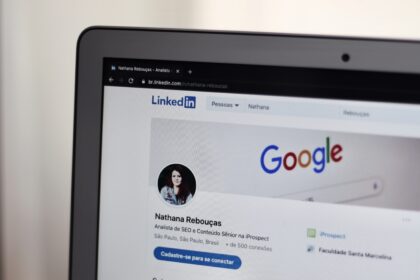Some of my thoughts
 The problem with “X” 2 years ago Looking at Twitter's recent rebrand to "X", and how it indicates problems that may well occur with the platform in the future.
The problem with “X” 2 years ago Looking at Twitter's recent rebrand to "X", and how it indicates problems that may well occur with the platform in the future. Women’s Weeds: an audio experience 2 years ago My wife Romany has been working on an audio exhibition called Women's Weeds at the Museum of the Home in Hoxton, London, and wanted my help in putting together a webpage on her site for people to access the audio.
Women’s Weeds: an audio experience 2 years ago My wife Romany has been working on an audio exhibition called Women's Weeds at the Museum of the Home in Hoxton, London, and wanted my help in putting together a webpage on her site for people to access the audio.  An example of real-world delight 2 years ago I publish a range of my thoughts on UX and design, as well as examples of my work. Do have a look around, and let me know what you think An example of real-world delight A little while ago, a friend shared with me her receipt from a restaurant called Daisy in Margate, Kent. Rather …
An example of real-world delight 2 years ago I publish a range of my thoughts on UX and design, as well as examples of my work. Do have a look around, and let me know what you think An example of real-world delight A little while ago, a friend shared with me her receipt from a restaurant called Daisy in Margate, Kent. Rather … SkyNet isn’t the problem: How UX and AI can work together 3 years ago The recent rise in articles and opinion pieces around AI has led to some pretty odd claims, either saying that AI is here to take our jobs as UX designers, or even more dangerously, suggesting that AI can be used in place of proper user research. In this piece, I detail a discussion I had with another UX thought leader about ways in which we envisage AI could help UX designers.
SkyNet isn’t the problem: How UX and AI can work together 3 years ago The recent rise in articles and opinion pieces around AI has led to some pretty odd claims, either saying that AI is here to take our jobs as UX designers, or even more dangerously, suggesting that AI can be used in place of proper user research. In this piece, I detail a discussion I had with another UX thought leader about ways in which we envisage AI could help UX designers. UX Theatre 3 years ago A write-up of a previous talk, given around my discovery of poor user-centred production processes, and how they're so prevalent, they have a coined term for them - UX Theatre, as well as examples of how you can help prevent them.
UX Theatre 3 years ago A write-up of a previous talk, given around my discovery of poor user-centred production processes, and how they're so prevalent, they have a coined term for them - UX Theatre, as well as examples of how you can help prevent them. Simple, but true. 3 years ago A simple fact I've had conformed time and time again after years of working with a wide variety of companies.
Simple, but true. 3 years ago A simple fact I've had conformed time and time again after years of working with a wide variety of companies. Making your LinkedIn profile work for you 3 years ago I recently came across a useful article which not only helped me improve my LinkedIn profile, but also helped me to understand the approach of recruiters better, and get better offers of new opportunities from them.
Making your LinkedIn profile work for you 3 years ago I recently came across a useful article which not only helped me improve my LinkedIn profile, but also helped me to understand the approach of recruiters better, and get better offers of new opportunities from them. Learning to build the right thing; how you can apply user research to make your product successful 4 years ago Having worked on software development projects for a range of different clients and industries, I have frequently seen that user research is conducted poorly, or even not at all. In this piece, I conduct an in-depth analysis of how to conduct successful user research for your project, and why it is so important.
Learning to build the right thing; how you can apply user research to make your product successful 4 years ago Having worked on software development projects for a range of different clients and industries, I have frequently seen that user research is conducted poorly, or even not at all. In this piece, I conduct an in-depth analysis of how to conduct successful user research for your project, and why it is so important. Seeing the road ahead — Catseyes and iterative design 5 years ago How I used a childhood memory of learning about Percy Shaw, the man who developed Catseyes, a road safety feature, in respect to learning about the value of iterative improvements on a design. Originally produced for the Scott Logic UX Design blog.
Seeing the road ahead — Catseyes and iterative design 5 years ago How I used a childhood memory of learning about Percy Shaw, the man who developed Catseyes, a road safety feature, in respect to learning about the value of iterative improvements on a design. Originally produced for the Scott Logic UX Design blog. How to improve your job search 6 years ago Sharing my experiences with job hunting in the UK tech industry Introduction On average, people in the UK tech industry change jobs every two years. Having had some experience myself of the difficulties around navigating the recruitment space, I thought I would provide some insights and tips around things I have found useful. These include …
How to improve your job search 6 years ago Sharing my experiences with job hunting in the UK tech industry Introduction On average, people in the UK tech industry change jobs every two years. Having had some experience myself of the difficulties around navigating the recruitment space, I thought I would provide some insights and tips around things I have found useful. These include …
If you would like to see more examples of my work, please get in touch.
Check out some of my design case studies to see projects I’ve worked on.